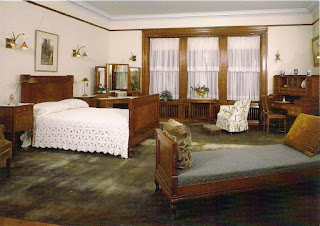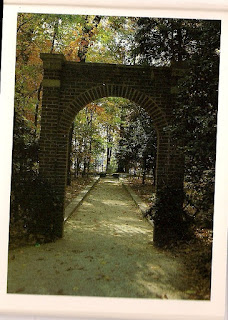These are my first postcards from Qatar. I got them through a secret santa swap on Reddit.com The person who sent them to me is from the USA but is stationed at the airbase in Qatar.
Send me a card :)
If anyone reading this blog would like to send me a postcard, I would love it. Email me to get my address at: ashdepo@yahoo.com
Touristy postcards that show me your country, or city, or something significant about where you live are my favorite. If you would like one back, email me your address and I will be glad to send you from Minnesota USA as well.
Touristy postcards that show me your country, or city, or something significant about where you live are my favorite. If you would like one back, email me your address and I will be glad to send you from Minnesota USA as well.
Saturday, December 26, 2015
Glensheen
Glensheen was a mansion in Duluth.
Library: The library, favorite gathering place of the family, with custumed designed furnishings and fireplace of lustre tiles.
Main Hall: The main hall features fumed oak paneling, carved pilasters, plaster ceilings and beautiful brass light fixtures with Quezal Art Glass.
Breakfast Room: The breakfast room is of Green Rookwood Tile and with the oak leaf motif in the stained glass and throughout the room, it creates a natural retreat.
Glensheen features a formal Georgian style dining room. A fruit and flower motif is used for the damask wall covering and English silver fixtures. Dark mahogany furniture is used as an accent.
Living Room: The living room featuring mahogany panels, Algerian marble fireplace, goat's hair damask wall covering and furnishings designs for the room.
Aerial View: Glensheen, a 22 acre estate, was built along the shore of Lake Superior. Jacobean Revival architecture was used for the main residence. Also constructed were three support buildings: the stone boat house, and two Tudor style buildings-the Carriage House and Gardener's Cottage.
Master Suite: Like most of the other furniture at Glensheen, the American walnut bedroom suite was handcrafted by the William A. French Company of St. Paul, MN
London Road View: Looking down the west driveway, the main entrance of the Chester A. Congdon family home, built between 1905-08, is visible.
Alexander Ramsey House
The dining room was the scene of many festive occasions in the home of Alexander Ramsey, first territorial govenor of Minnesota, and his wife Anna. Given to the Minnesota Historicial Society in 1964 by their last surviving heir. It is now open to the public as a historical house museum.
Completed in 1872 this Second Empire Victorian house was the home of Alexander Ramsey, first territorial governor of Minnesota.
Trafalgar Falls
The sounds of rushing water breaks the silence of the forest. The abundance of rain also amplifies the rich verdant rain forest and its complete eco-system that supports thousands of plants, insects and wildlife.
Polikar Waterfall
Climbing the slopes of Mount Aibga, the hiker will see all natural zones, as the broad-leaved beech and chestnut forests at the foothill gradually change into coniferous forests consisting of Nordmann fir and eastern spruce. Then the conifers yield to forests of crooked birch trees and to sub-alpine meadows. The riot of colour and man-tall grasses give place to thickets of rhododendron. Its branches are so closely interlaced that the hikers have to cut their way through the thicket. And only then you will see this waterfall, which rushes down the ledge in white-foam cascades of water. Above the waterfall, the path enters the zone of alpine verdure, with low herbs and modest flowers as a bridge to the upper layer of eternal snow. On the top of the Aibga cirque no plants grow -only rocks, winds, and clouds flying in the sky above.
Great Smoky Mountains
The long rugged hike along the Appalachian Trail to an unusual out-cropping of rocks is worth the trip for the spectacular view of the slopes of Mt. LeConte.
Pittsburg
Seen here at dawn, Pittsburgh's West End Bridge graces the skyline and carries travelers across the Ohio River. Since completion in 1932, this bridge has provided a much-needed link between the North Side and South Hills.
Bridal Veil Falls
Bridal Veil Falls
Camp 1 Tuba, Benguet
A falls that resembles a bridal's veil. It is located along Kennon Road on the way to Baguio.
Black Hills
This postcard booklet type thing was gotten by my mom on a trip many years ago to South Dakota and the Black Hills.
Top: Mt. Rushmore: closeup view of this magnificent "Shrine of Democracy" where the busts of the four great Presidents are sculptured in solid granite in heroic proportions, 450 feet high.
Middle: Shrine of Democracy: This name is eminently fitting for Mt. Rushmore, a memorial carved by Gutzon Borglum out of ageless granite, a memorial -not to men- but to the spirit and ideals of our country. An inspiration to every American.
Bottom: Hairpin Turn, Cathedral Spires: Approaching granite pinnacles that tower overhead, the visitor passes the base of gigantic needle-like formations. These inspiring vistas were created by unimagined forces millions of years ago and remain as one of Nature's most beautiful handiworks.
Top: Needle's Eye: From out of the unknown past Mother Nature through wind and rain has feathered out a huge "needle's eye" in the ageless granite of the Black Hills of South Dakota.
Middle (2nd down): Aerial of Pig Tail Bridge: On the famous Iron Mountain Road in the Black Hills of South Dakota is one of several unusual bridges built on native logs that elevates the tourists in his car as he rides to the mile high points of interest. Mount Rushmore may be viewed in the distance while traveling this highway.
Middle (2nd from bottom): Shrine in Stone Frame: Like a huge picture, in a frame of stone the "Shrine of Democracy" presents a lasting Memorial as viewed through the tunnel in the Black Hills of South Dakota.
Bottom: Buffalo Herd: Buffalo roam as of old through Custer State Park and Wind Cave National Park in the Black Hills of South Dakota. The herds number over one thousand. They may be seen from your car as you drive through the parks.
Top: Mt. Rushmore: How Kola Black Elk, one of the mighty Sioux, in full dress.
Middle: Sylvan Lake: Sylvan Lake is one of this scenic spots of the Black Hills. It is a man-made lake set high in Custer State Park, surrounded by a granite cliff and towering pines.
Bottom: Spearfish Canyon: This beautiful canton abounds in vacation pleasures such as picnicking, trail rides and swimming. The clear mountain stream offers fine trout fishing in addition to the spectacular scenery.
Mount Vernon-The home of George Washington
This was a small postcard type book I bought as a souvenir when I was in 9th grade and on my school trip around the Washington DC area. Some of the photos are kind of weird as it was difficult to scan some of the pages of the booklet.
West Front of Mansion: In the 18th century, guests arrived at the west front entrance of the Mansion. Washington enlarged the original house that his father had built by adding another story and building wings on the north and south. The exterior siding of the Mansion and courtyard outbuildings is pine, which has been beveled to resemble blocks of stone and painted with sand and paint to simulate the texture of stone.
Large Dining Room: The most formal and elegant room in the Mansion, the large dining room could accommodate a great number of guests for a variety of functions, including dinners and parties. One such feast is the holiday dinner, featuring a Christmas pie, leg of lamb and stuffed cabbage. The temporary dining room table was stored away when not in use.
Central Passage: Much of the social life of the Washington family and guests was centered around the mahogany-grained passage, which runs the full width of the Mansion. The key to the Bastille, a gift to George Washington from the Marquis de Lafayette, hangs on the south wall.
George and Martha Washington's Bedroom: On December 14, 1799, George Washington died on this bed in the room he and his wife shared. Other objects of interest in this room include Washington's trunk at the foot of the bed, Martha Washington's desk and portraits of her four grandchildren.
Study: No room at Mount Vernon is as closely associated with George Washington as his study, which contains the desk he purchased in Philadelphia at the end of his presidency, his terrestrial globe and an 18th century fan chair. From this private room Washington directed the activities of his plantation and corresponded with leaders of the day.
Family Kitchen: Meals for family and guests were prepared in the kitchen, a separate building that connected to the Mansion by a colonnade. Martha Washington supervised the planning of meals and made regular visits to the kitchen.
Lower Garden: The lower garden provided a bountiful supply of fresh produce for the family and guests at George Washington's estate. Vegetables were grown in beds lined with herbs and fruit trees were trained along the garden walls.
George Washington's Tomb: In his will, Washington included instructions and a basic design for a new tomb. More than 30 years later, his remains were transferred to the new enclosure, which is also the final resting place of Martha Washington and other family members.
Slave Memorial: A memorial on the site of the slave burial ground honors the African-Americans who served as slaves at Mount Vernon. The slave memorial was designed by architecture students at Howard University and was dedicated by the Mount Vernon Ladies' Association in 1983.
Wharf: The wharf at Mount Vernon was constructed in the 19th century to serve visitors to the estate. Today, more than 50,000 visitors journey by boat to Mount Vernon each year. The structure received an extensive renovation in 1991 using contributions primarily from the citizen of Oregon.
Upper Garden: In his upper garden, George Washington created a formal pleasure garden, with beds of flowers and vegetables separated by brick-lined walls. The small octagonal garden house stands in the northeast corner of the upper garden.
East Front of Mansion: The Mansion overlooks the sweeping east lawn and surrounding lands of George Washington's vast estate. The Mount Vernon Ladies' Association has preserved 500 acres of Washington's original 8,000 acre estate.
Subscribe to:
Posts (Atom)


















































